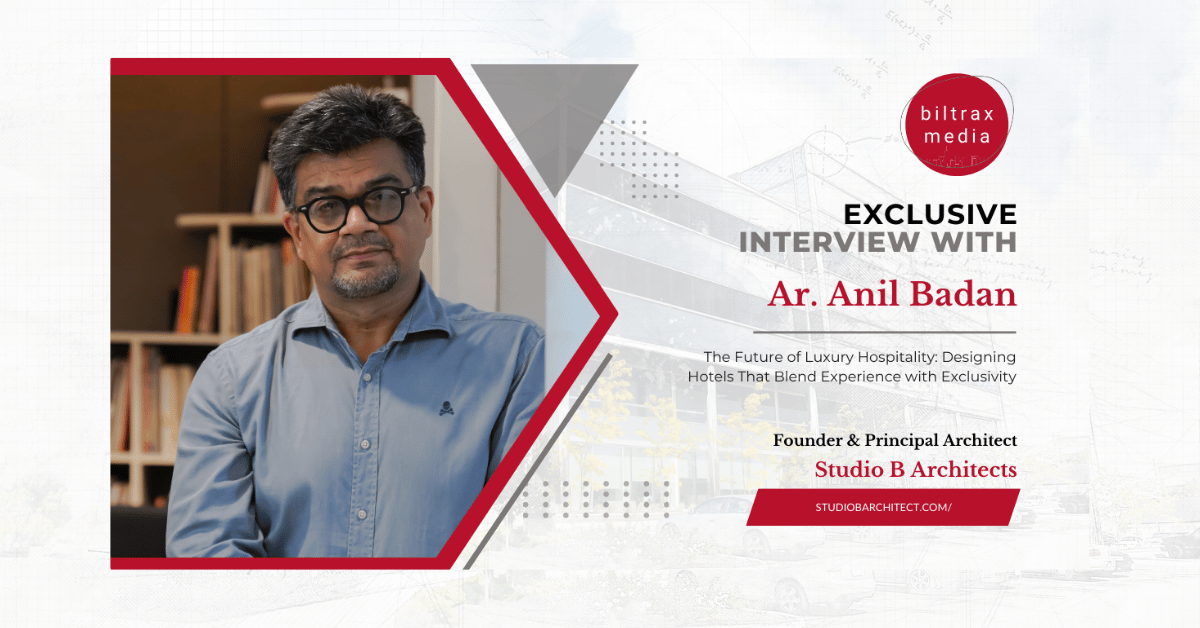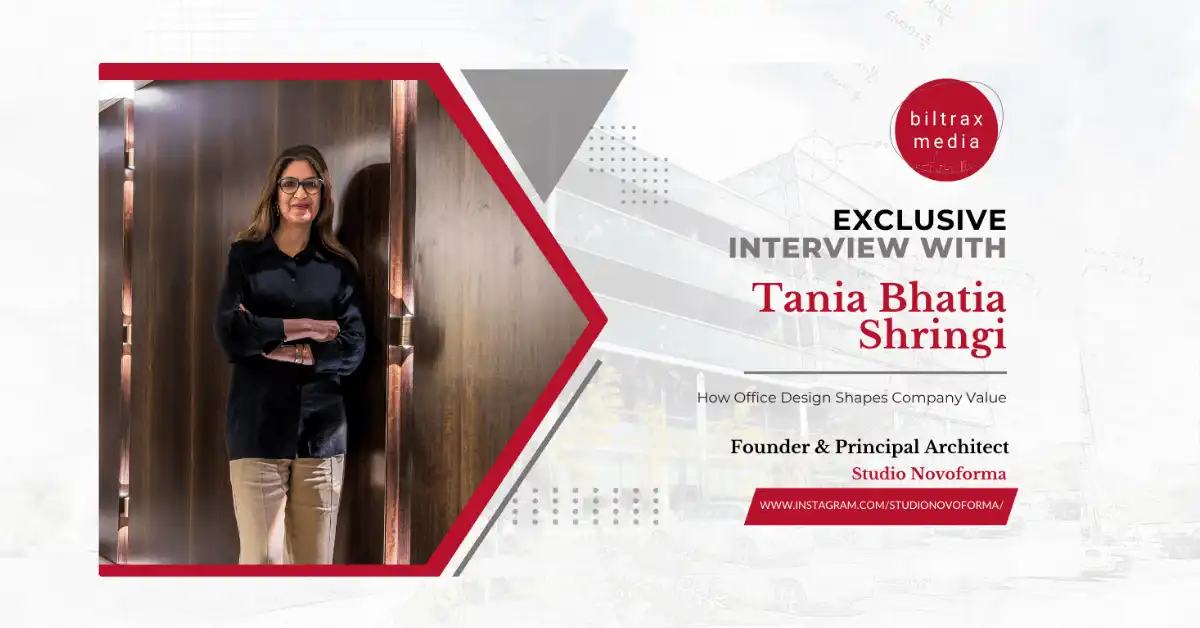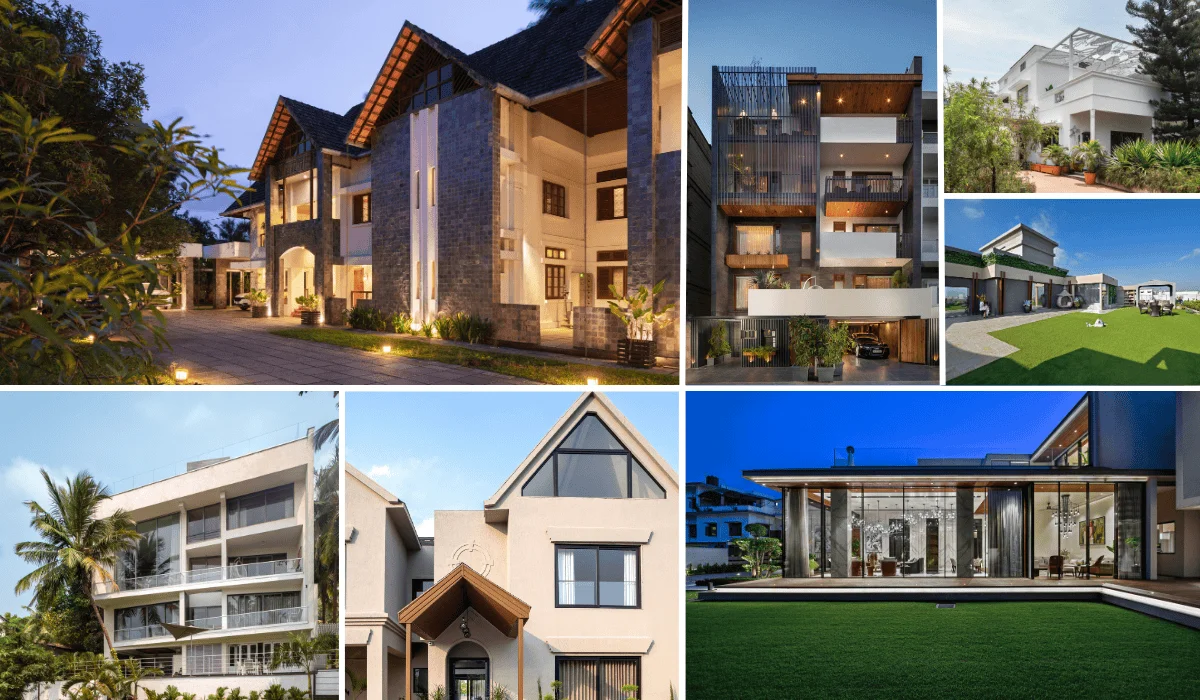Nandini Sampat shares her thoughts on passion, purpose and progress in conversation with Biltrax Media. Life is not about sticking to something because it was your first choice. It takes courage to step into something new and outgrow the lives we have built. Nandini Sampat, the principal architect at Somaya & Kalappa Consultants Pvt. Ltd., is among the few who had the determination to follow her dreams and passion. She bravely followed her instincts to move forward in the profession of architecture and there has been no looking back since then. Her broad exposure has honed her skills and polished her ability to think holistically. Today, she heads SNK Architects handling various projects, catering to the client’s requirements, and crafting exceptional spaces while enjoying her career.
Drifting from law and political science, at what moment did you start to recognize that architecture is your calling? Can you recall any profound memory of this realization?
‘No education is wasted.” – These were the words of my grandfather that have always held me in good stead. My journey has always been of great value. I don’t believe there was any particular ‘Aha moment’ of realization but more a sequence of events that led to this transition. Looking back there is no moment to pinpoint but rather to view my experiences as a singular journey that led me to become the Architect I am today.


You have spent a significant amount of time in India, America, and London. How has this global travel impacted your design thinking?
“To travel is to live,” said the author Hans Christian Andersen. To travel means to be more accepting and open to new ideas, culture and traditions, to be constantly learning and adapting to new and different situations and challenges. Diversity is what makes our world special and to experience it across the globe is a privilege. Time spent away from India also makes one realize the incredible richness, beauty, and diverse cultural heritage we have in our own country. As Indians, there is much for us to protect, preserve, and pass on to future generations.
“To travel is to live,” said the author Hans Christian Andersen. To travel means to be more accepting and open to new ideas, culture and traditions, to be constantly learning and adapting to new and different situations and challenges.
What do you think is the condition of India’s living heritage? How can development support nation-building while safeguarding both the built and the living heritage of our country?
We Indians have been fortunate enough to engage, live, and experience our lives surrounded by heritage structures, geographical locations or even monuments, and often forget this immense privilege that we have had. It is when we recollect these static memories in our mind that we realize what an immense impact the architecture, stories, and beauty of the buildings have on us all. We often say that if each person becomes a ‘God of Small Projects’ – contribute within their own capacity and capability towards protecting, rehabilitating, conserving cultural (tangible or intangible), social or architectural heritage; this will have a cumulative impact on safeguarding the living heritage of our country.
In reference to your recently completed project, “Bharat Bhavan 2”, how have you explored the concept of ‘yin and yang’?
Bharat Bhavan 2 features distinctly in the Ballard Pier Heritage Sub-Precinct within the larger Fort Heritage Precinct of Mumbai. SNK was appointed for the conservation and interior design of the building.
We took inspiration from the BPCL logo for the concept for the project’s interiors. We used Yin and Yang as metaphors and symbolism. The BPCL Logo is a confluence of two elements namely Yin and Yang and the golden drops of oil. The genesis of this unique symbol reminds one of the dynamic interplays of two polar forces – YIN and YANG. This idea of the balance of the opposing forces is represented metaphorically by introducing a neutral palette creating a soothing and subtle ambience, balanced with accent colours and Indian artworks across all the floors.
How can civic policies and urban planning be re-thought and made gender-inclusive? What is the role of gender-sensitive design in a developing nation like India?
India is complex, and it’s her complexity that makes India an incredibly unique and great nation while simultaneously causing herculean challenges for all. The last decade has witnessed the changing landscape of the country and how we have begun to recognize gender inclusivity. We need the support of policymakers who can collaborate with Architects, Planners and Designers on all scales- national, regional, state, urban and rural, to have a genuine impact on gender-inclusive planning. There has to be meticulous planning and consideration of the social, cultural and religious diversity of our country to ensure that appropriate solutions are achieved.


You have had the opportunity to work with both private clients and the government. What opportunities and challenges do each bring to the table?
As professionals, I believe that it is part of our responsibility to offer our services to both the governmental, public and private sectors. This is even more important in a country like India. An Architect must learn to work across a wide typology of clientele and projects. This is to be effective and to innovate and design contextually and creatively. I do believe that one of the greatest challenges being faced by Architects today from all the clients’ end is that we are being equated to vendors or contractors. The value addition we bring as professionals, similar to a doctor or a lawyer no longer holds. As a community, Indian Architects need to raise the standards of the profession. This is to ensure that there is a clear understanding and respect shown for the immense skill, expertise, technical know-how and creative innovation that is required to be a practitioner.
What are the future trajectories for your firm regarding your design process, upcoming projects, research and initiatives taken? Have you undertaken any pandemic induced project or innovation?
Our practice spans 40 years and through that time there has been an evolution of our methodology of working. As India and the world changes, we adapt and innovate for new challenges. However, there are Indian design principles that remain the foundation of the practice and continue to be the basis of all the work we do. Each project is unique and has its own journey and narrative. We follow a research-based process and we begin with deep-diving into the specific typology or area associated with the project. This allows for cumulative ideation and innovative thinking during the conceptual design process.


The global headquarters for Bharat Petroleum Corporation Ltd. (BPCL) in Mumbai was particularly significant for our studio as we were able to complete it during the COVID 19 pandemic. Having the support and trust of the client and the incredible team of people we worked with during this challenging period made it possible for the project to be successfully completed. Being able to collaborate and work with Indian artists and craftsmen, specifically supporting them through the COVID-19 pandemic year, and also giving their work a platform as important as a global headquarters building was of great importance for all of us.
Somaya and Kalappa Consultants Pvt. Ltd.
Website: www.snkindia.com
E-mail: enquiries@snkindia.com
Contact: 022 43001234
Biltrax Construction Data is tracking 17000+ projects on its technology platform for its Clients. Email contact@biltrax.com to subscribe and generate business leads.
Discover more from Biltrax Media, A Biltrax Group venture
Subscribe to get the latest posts sent to your email.





























